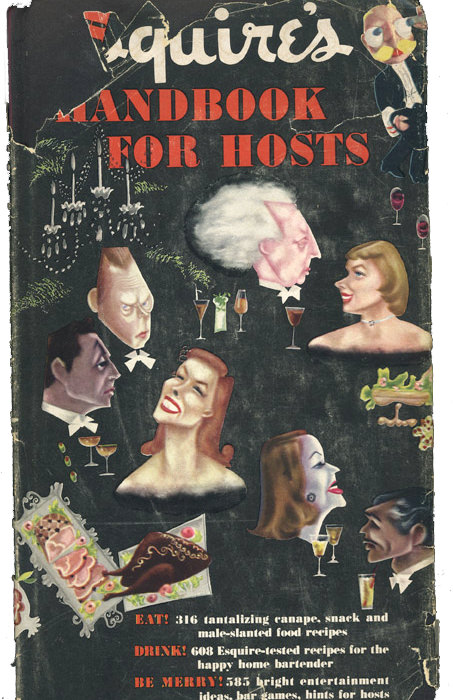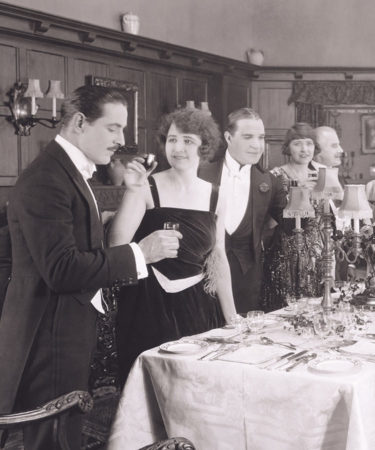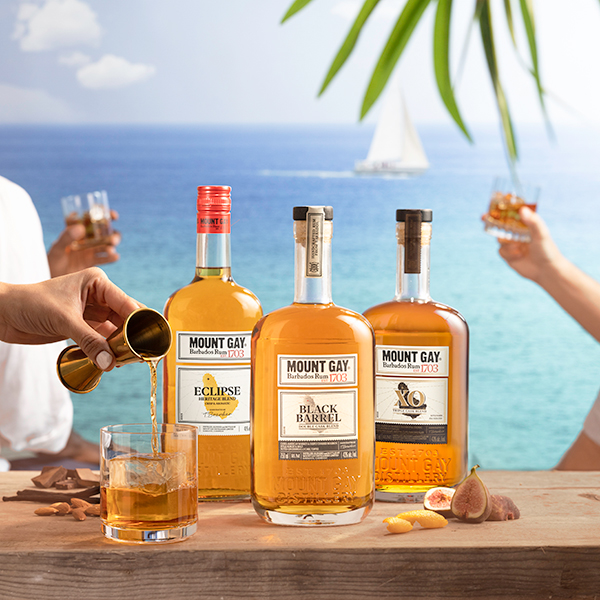For those of us with a passion for spirits who like to kick it old school, cocktail books are vital. The best include “Meehan’s Bartender Manual,” by PDT’s legendary Jim Meehan, and Mr. Harry Craddock’s “The Savoy Cocktail Book.”
Somewhere in the middle of a very extensive collection lies “Esquire’s Handbook for Hosts.” This long-forgotten tome of cocktail recipes and hosting tips was published in 1949. It’s filled with line drawings, antiquated bar terminology (what’s a pony of brandy?*), and some painfully outdated themes. Namely, that (white) men are in charge, and women are… not.
What makes this book particularly interesting is that, among the (many) insulting passages lie some actually useful hosting tips and cocktail recipes. If you’re able to get past the pervasive sexism, you’ll find professional-grade advice on what type of cookware you should purchase when setting up a kitchen in your first apartment. The book also provides a cheat sheet for entertaining, so you can keep track of who drinks what for your next gathering.
“The mark of a good host is that he has a good time at his own party — but not too good,” Esquire writes. This is sound advice, even if the gendered language is sub-optimal. (Whenever the book refers to its reader, it’s always him, he, or his.)
Another passage reads, “If you are guided by a consideration from others, you need no rule book.” This is very true. If only the editors of this book took their own advice.
We took a look at the most egregious lines with Jena Ellenwood, one of the best bartenders in the business. We found ourselves nodding at her insightful commentary as we reached for a very stiff drink.

“The world’s greatest cooks are men.” (page 11)
Julia Child would have a thing or two to say about that.
What’s sad is, at the time of this book’s publication, cooking schools did not allow women to attend. The Culinary Institute of America first admitted women in the 1970s. Even if a woman had the talent, skill, and tools, she was denied access to explore her passion.
Sadder still, it took over 20 years to go by before CIA inducted Julia Child into its Hall of Fame.
“After suffering steam table tastelessness or misplaced housewife economy, any plate will perk up at the taste of fresh fish, properly prepared by a man. (Women don’t seem to understand fish — and, we suppose, vice versa.)” (page 45)
The list of Michelin-starred and James Beard Award-winning female chefs, not to mention talented home cooks, and just functional human beings, who would disagree is longer than a country mile.
It’s almost as if the writer doesn’t like or understand women — and, we suppose, vice versa.
“Coffee is a man’s drink.” (page 81)
This decree is sandwiched between a fun historical factoid about coffee’s perceived potential to render women “barren” in the 16th century, and its tendency to appear as “a mean, thin liquid with almost unlimited capacities for discouraging real coffee lovers” when prepared in the wrong, e.g., female, hands.
“There will be times… when you must steel yourself to mix up one of those fluffy, multicolored abominations which, for some mysterious reason… the ‘ladies’ insist upon downing.” (page 117)
Jena Ellenwood, an award-winning bartender in NYC, smartly puts this “abomination” in modern context. “I feel like this feeds into a very large national conversation as of late,” Ellenwood says. “By deeming certain libations ‘unmanly’ in 1949, Esquire created men who feel like their very core could be threatened just based on what cocktail they order.”
Ellenwood notes how, in some recent bars she’s worked in, male patrons will occasionally ask her to serve their cocktails in a “non-girly glass.”
“I’ll oblige, but in my head I think, ‘The stem serves a purpose! If it was good enough for Bond, it should be good enough for you,’” she says.
“Something for the Girls: Alexander, Bronx, Orange Blossom, Pink Lady [recipes follow]” (page 118)
Ellenwood shakes her head at this section of cocktails, all of which curiously feature gin, and some of which are currently enjoying a resurgence among leading cocktail connoisseurs. “Maybe instead of labeling things ‘manly’ or ‘unmanly’ we could let them be and just enjoy them,” Ellenwood says. Then she drops the hammer.
“I’d also be curious to see how many recipes in the book were, in fact, created by female bartenders,” Ellenwood says.
* By the way, a pony is one fluid ounce.
Recipes (for Everyone)
Alexander
½ jigger gin
¼ jigger crème de cacao
¼ jigger cream
Ice, shake, and serve in a cocktail glass.
Bronx
⅔ jigger gin
⅙ jigger French vermouth
⅙ jigger Italian vermouth
Dash of orange juice
Ice, shake well, and serve in a cocktail glass.
Orange Blossom
⅓ jigger orange juice
⅓ jigger Tom gin
⅓ jigger Italian vermouth
(This recipe forgoes instructions, but typically it is shaken with ice and served up in a chilled Martini glass.)
Pink Lady
1 ounce gin
½ ounce applejack
1 egg white
1 lime, juiced
A few dashes of Grenadine, or strawberry or raspberry syrup
Shake vigorously with cracked ice. Strain. Sprig of mint optional decoration.

